Just when you think you know everything about Christmas traditions, the vibrant Garifuna Wanaragua dance will astound you with its rich cultural significance. This captivating tradition showcases dancers adorned in pink wire masks and regal crowns as they parade through the streets of Southern Belize during the festive holiday season. This time-honored practice harmoniously blends music, dance, and social commentary, allowing you to immerse yourself in the resilient spirit and artistic expression of the Garifuna people. Whether you’re planning a trip to Belize or aiming to broaden your knowledge of diverse cultural celebrations, this extraordinary fusion of history and festive cheer will deepen your understanding of Christmas traditions.
Explore the Cultural Depth of the Wanaragua Dance Tradition
Diving into the intricacies of the traditional Garifuna dance reveals a unique blend of cultural resistance and joyous celebration. This vibrant dance features performers in masks, rhythmic movements, and distinct costumes that tell stories of the Garifuna people’s cultural resilience and community spirit. Each dancer plays an essential role, embodying the rich history and enduring traditions of the Garifuna community through their art. Observing or participating in the Wanaragua dance allows you to engage with a dynamic performance that serves as a living testament to a culture that has thrived against adversity. This immersive experience deepens your appreciation for their heritage, showcasing the beauty of their artistic expression.
Unearth the Historical Significance of the Wanaragua Dance
Having settled in Belize over 200 years ago, the Garifuna people introduced this powerful tradition, which has undergone significant evolution over the centuries. You can trace the Wanaragua’s origins to the colonial era, when dancers cleverly employed masks and European-style attire to satirize their British colonial oppressors, transforming their oppression into a compelling form of artistic expression. This remarkable dance not only preserves historical narratives but also fosters a sense of identity and purpose within the community, reminding audiences of the power of resilience through creativity and performance. Understanding these historical roots enriches your experience and appreciation of this vibrant cultural practice.
Appreciate the Cultural Importance of Wanaragua Within the Garifuna Community
The Wanaragua dance is a vital component of Garifuna Christmas festivities, where it strengthens community bonds and preserves cultural heritage. In these lively performances, men don pink wire masks, embellished crowns, and white tops adorned with ribbons, while women participate as Gayusas, providing vocal harmonies that enhance the experience. This communal celebration serves not only as entertainment but also as an essential means of imparting cultural knowledge and values to younger generations. The dance acts as a living archive, encapsulating the spirit and continuity of Garifuna traditions within the framework of Belizean society. Witnessing this vibrant display reinforces the importance of cultural preservation and pride in the community.
Historical accounts reveal that the Wanaragua has evolved into a crucial educational resource for younger generations. Today, performers of all ages, from toddlers to seniors, actively participate in events like the Jr. Annual Habinahan Wanaragua Competition, ensuring that this cherished tradition continues to thrive within contemporary Garifuna communities. Each performance serves as a vibrant reminder of the importance of cultural heritage and the role of dance in fostering a unified community identity. This intergenerational participation not only strengthens social bonds but also cultivates a profound sense of belonging among community members.
Discover the Core Elements That Shape the Wanaragua Dance Experience
To fully appreciate the Wanaragua, it’s essential to familiarize yourself with its three primary components: the masks, costumes, and music. Each of these elements holds profound cultural significance, tracing back 200 years to the arrival of the Garifuna ancestors in Belize. Together, these components weave a unique tapestry that distinguishes Wanaragua from other cultural dances, creating an unforgettable Christmas celebration that resonates deeply with participants and observers alike. This intricate interplay of visual and auditory elements ensures that the Wanaragua experience captivates all who witness it.
Examine the Symbolic Costumes and Masks Used in Wanaragua
As you immerse yourself in Wanaragua, you will observe dancers adorned in pink-painted wire masks that echo European characteristics. Their costumes consist of white shirts embellished with vibrant ribbons across the chest and waist, complemented by cowry shell knee pads that contribute to the rhythmic sounds of the dance. Your attention will be drawn to the majestic crowns crafted from crepe paper, mirrors, and feathers, symbolizing a powerful act of cultural pride and resistance. Each costume element is meticulously designed not only to enhance the visual appeal but also to convey the rich history and significance of Garifuna culture. This attention to detail ensures that each performance is not only visually stunning but also deeply meaningful.
Explore the Musical Instruments and Rhythms Central to Wanaragua
The rhythms of Wanaragua follow a distinct pattern, primarily driven by two essential drums – the primero and segundo. You will be captivated by the intricate blend of drumbeats and the rattling of cowry shell knee pads, creating a mesmerizing musical experience that fuels the dancers’ movements. These rhythms are not merely background sounds; they serve as the heartbeat of the performance, dictating the pace and emotion conveyed through each dance step. Each beat is infused with cultural significance, enhancing the overall impact of the performance.
Instruments used in your Wanaragua experience include the traditional Garifuna drums, crafted from hollowed tree trunks and animal skins. The female singers, known as Gayusas, add their voices to the mix, forming a powerful fusion of percussion and vocal harmony that has been cherished and preserved through generations. This musical interplay is integral to the dance, enriching the overall experience and connecting performers and audiences through the universal language of rhythm. It is this synergy between music and movement that breathes life into the Wanaragua dance.
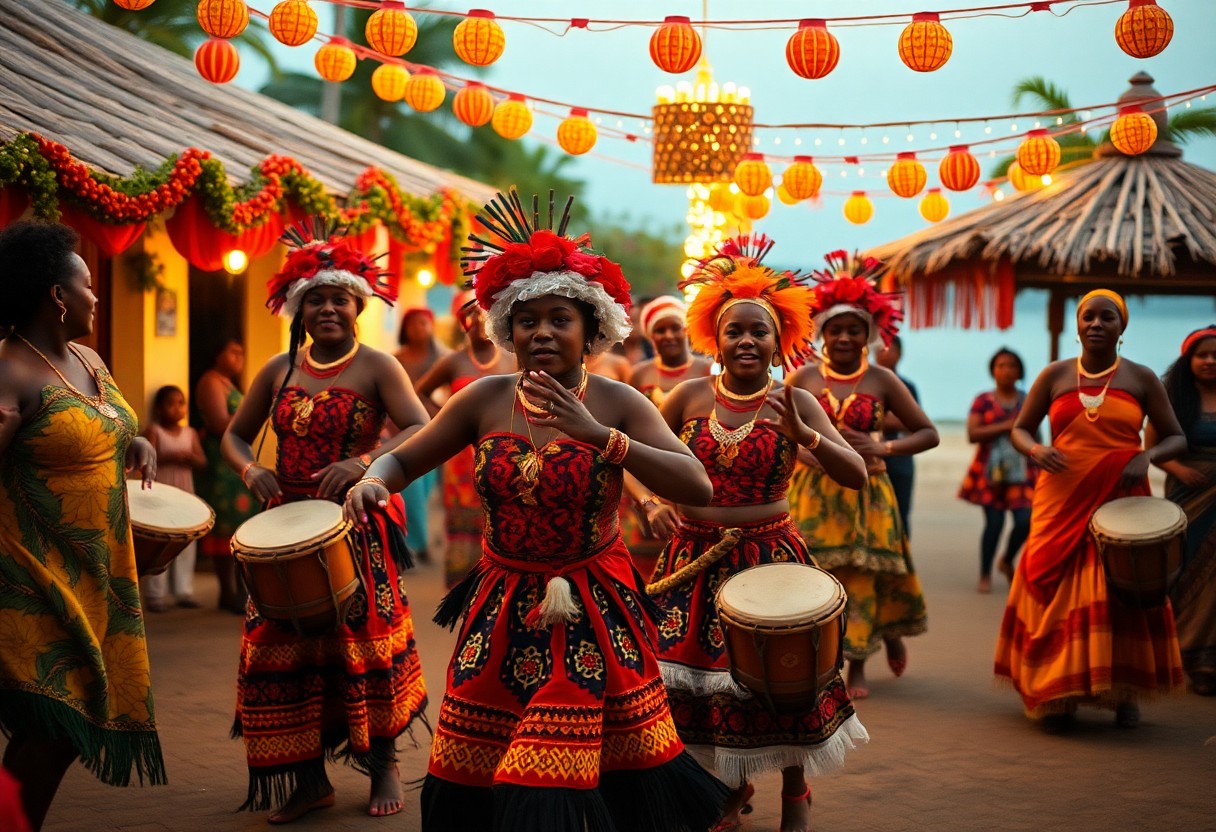
Engage with the Diverse Forms of Wanaragua Performances
You can immerse yourself in Wanaragua dance performances through two distinct settings, each offering unique opportunities to connect with Garifuna culture. These performances range from traditional house visits to modern festival shows, each with its own flavor and community significance. Understanding these different contexts enriches your overall experience and appreciation of the dance, as each setting highlights various aspects of Garifuna culture.
| Performance Type | Characteristics |
|---|---|
| House-to-House | Traditional, intimate, community-based |
| Festival Shows | Large-scale, choreographed, competitive |
| Time Duration | 15-30 minutes per performance |
| Participant Number | 3-10 dancers per group |
| Musical Elements | Drums, vocals, shell rattles |
Engage with Traditional House-to-House Dancing Experiences
During the Christmas season, Wanaragua dancers bring the celebration right to your doorstep. You’ll witness performers gracefully moving through neighborhoods, pausing at homes where families gather on porches. This intimate performance style fosters personal connections between dancers and audiences, facilitating a shared experience that reinforces community bonds and highlights the significance of local traditions. This close interaction enhances the festive atmosphere and strengthens the social fabric of the community.
Immerse Yourself in Modern Festival Presentations of Wanaragua
Clearly, you can observe how Wanaragua has evolved through organized festivals and competitions. These events not only showcase local talent but also play a crucial role in preserving cultural heritage through structured performances. Attending these festivals gives you a chance to witness competitive showcases where dancers exhibit their skills at events like the Battle of the Drums and the Jr. Annual Habinahan Wanaragua Competition. Your participation, whether as a spectator or performer, is essential in helping keep this valuable tradition alive for future generations. Engaging with these performances ensures the continuity of this vibrant cultural expression.
Learn the Dance Steps: A Comprehensive Guide to Wanaragua Dance Techniques
Despite its intricate appearance, mastering the Wanaragua dance is achievable through dedicated practice and a solid understanding of its key components. Your journey begins with mastering the basic footwork and gradually progresses to more complex movements that characterize this traditional Garifuna dance. Each step you learn will bring you closer to capturing the essence of this vibrant cultural expression, allowing you to appreciate its beauty and significance on a deeper level.
Basic Dance Elements
| Footwork | Three-step pattern, heel-to-toe movement |
| Body Position | Upright posture, shoulders squared |
Mastering the Fundamental Movement Patterns in Wanaragua Dance
One of your initial steps in learning Wanaragua involves mastering the fundamental three-step pattern. Your feet should move in a rhythmic sequence that syncs with the drumbeat while maintaining balance with the shell-adorned knee pads. This foundational movement is crucial, as it forms the basis for more intricate choreography that you will learn in later stages. As you practice, focus on maintaining a strong connection to the rhythm, which is vital for synchronization with the ensemble.
Elevate Your Skills with Advanced Choreography Techniques in Wanaragua
- Mask manipulation techniques
- Synchronized drum responses
- Directional changes
- Group formation movements
An advanced Wanaragua dancer must master the precise timing between movements and drum beats. Your performance should showcase fluid transitions and confident handling of masks, allowing you to convey the spirit of the dance effectively. Each movement should reflect the energy of the music, creating a harmonious blend of dance and rhythm.
Advanced Techniques
| Mask Work | Side-to-side movements, circular motions |
| Rhythm Response | Quick tempo changes, syncopated steps |
Understanding the cultural significance behind each movement will significantly enhance your performance. Your advanced routine should seamlessly incorporate traditional elements while maintaining the satirical essence of the Wanaragua dance, providing audiences with a captivating experience that resonates on multiple levels. This depth of understanding not only enriches your performance but also connects you more deeply to the cultural roots of the dance.
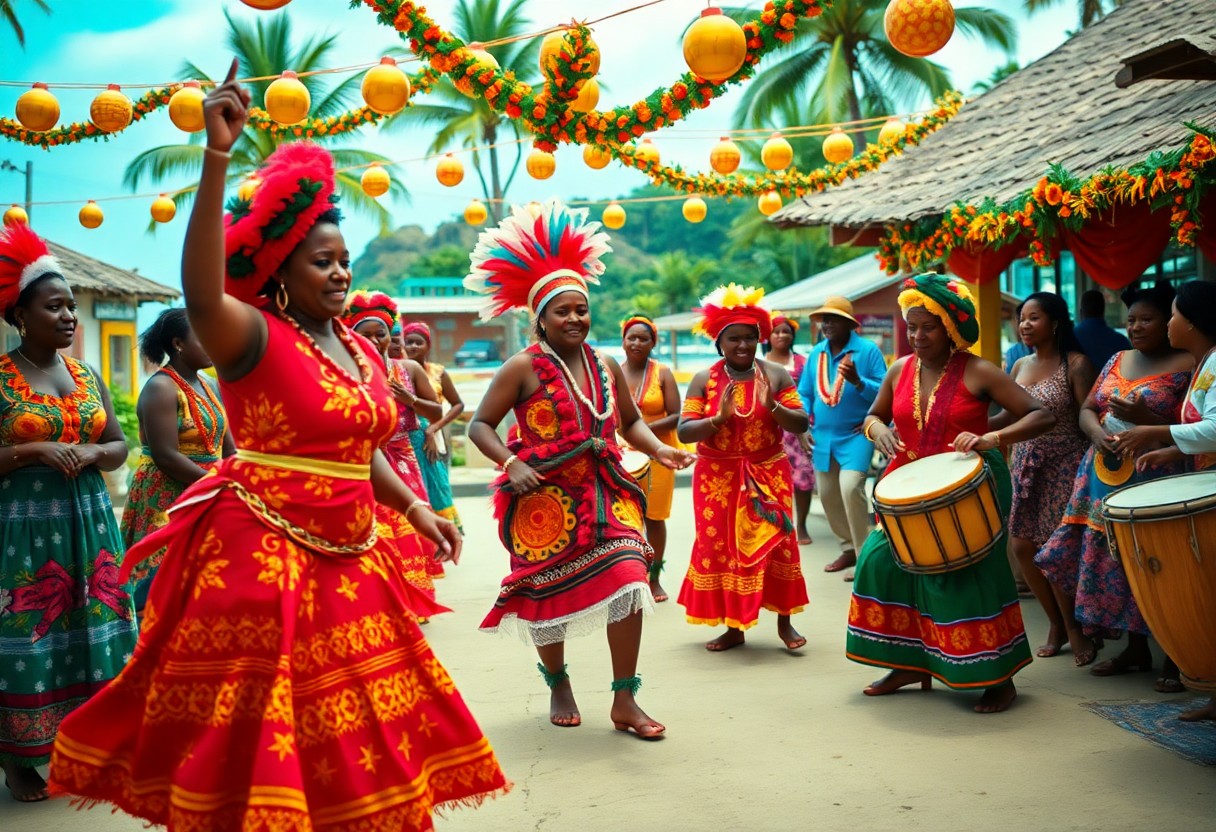
Essential Strategies for Achieving Mastery in Wanaragua Performance
To excel in the Wanaragua dance, it’s crucial to concentrate on three key elements: rhythm, footwork, and mask control. Developing proficiency in these areas will elevate your performance and enhance your connection to the dance. Mastery of these fundamentals allows you to express the dance’s cultural richness fully.
- Maintain an upright upper body to ensure balance and poise
- Synchronize your steps with the drum beats for seamless movement
- Practice mask balance while executing various movements
- Keep consistent energy throughout your performance to engage the audience
In the event of any mistakes during your performance, a quick spin or knee dip can effectively mask the error, allowing you to maintain the flow of the dance. This adaptability is crucial for successful performances, demonstrating your ability to remain composed under pressure.
Costume Preparation Guidelines for Wanaragua Dancers
Attention to detail is paramount in your Wanaragua costume. You should secure your mask firmly, arrange your ribbons meticulously, and test your cowry shell knee pads prior to the performance. Ensure your crown is properly balanced and adorned with vibrant colors that complement your outfit, as these visual elements play a significant role in the overall impact of your performance. A well-prepared costume enhances your confidence and presentation on stage.
Effective Dance Practice Recommendations for Aspiring Wanaragua Performers
Costume rehearsals are essential for you to adapt to the weight and movement restrictions of your Wanaragua outfit. Practicing for at least 2-3 hours weekly will build your stamina and help you perfect your moves. Your footwork must align perfectly with the drum rhythms to create a cohesive performance. Regular practice sessions also allow you to refine your techniques and enhance the quality of your performance.
Preparation requires your full dedication to master the traditional steps. Begin with basic movements without the mask, gradually introducing costume elements to ensure comfort and fluidity. Your practice sessions should incorporate drum accompaniment to enhance your timing and rhythm awareness. Seeking regular feedback from experienced dancers will further refine your performance quality and enhance your connection to the dance, ensuring a richer experience for both you and your audience.
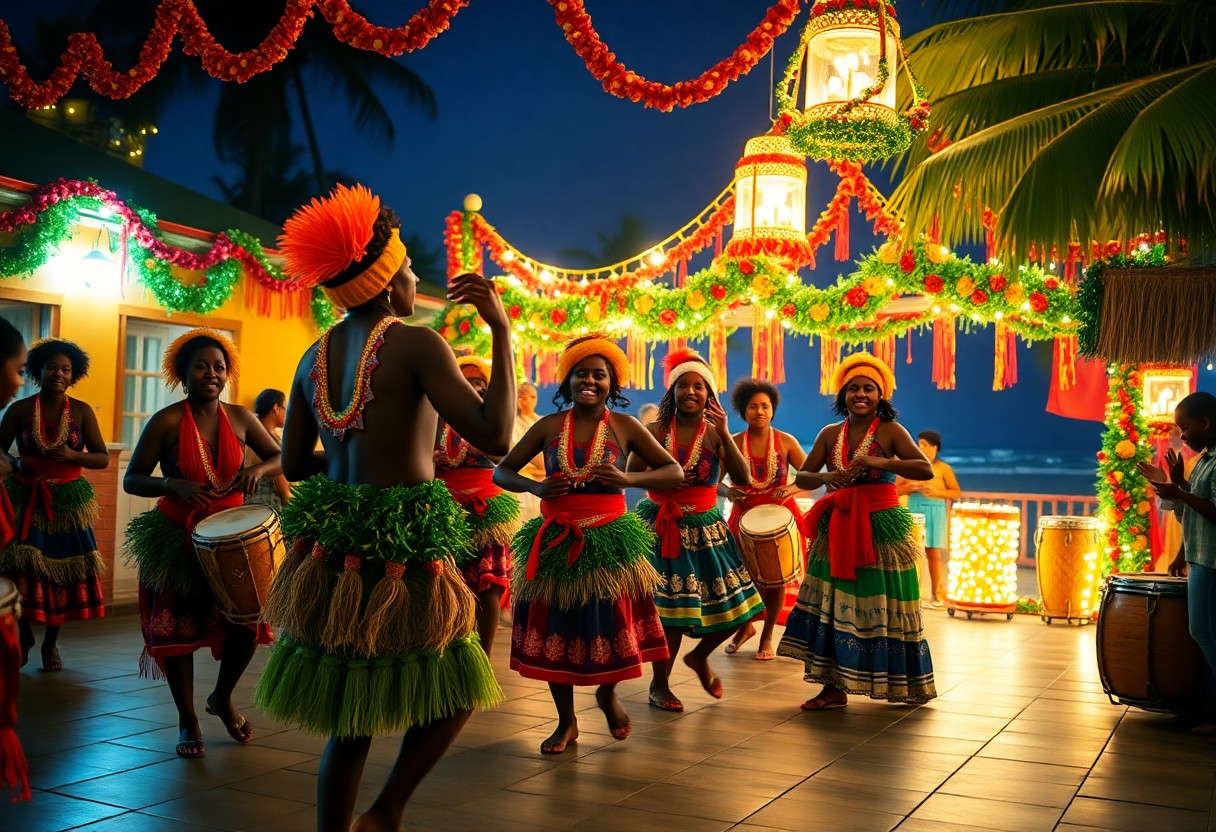
Key Factors Influencing the Longevity of Wanaragua Dance Tradition
The survival of the Wanaragua dance tradition hinges on several key elements that integrate into today’s evolving society. You will find cultural education, community support, and local festivals playing critical roles in sustaining this heritage. The future of this tradition relies heavily on:
- Active participation of youth in cultural events
- Regular organization of cultural events to celebrate traditions
- Family involvement in teaching and performing
- Documentation efforts to preserve history and practices
The interplay of these factors ensures that Wanaragua remains a vital part of modern Garifuna culture, fostering appreciation and understanding among future generations. This commitment to preservation reflects a deep respect for cultural identity and heritage.
The Importance of Community Involvement in Preserving Wanaragua
The success of preserving Wanaragua is deeply rooted in your community’s active participation. You’ll observe local organizations hosting weekly practice sessions and cultural centers providing venues for performances. Engaging in these activities not only helps maintain the vitality of this tradition but also strengthens community bonds and fosters a collective sense of identity. This level of involvement nurtures a shared commitment to cultural continuity.
Facilitating Generational Knowledge Transfer in Wanaragua
Clearly, the transfer of Wanaragua knowledge requires a dedicated effort from older generations to the younger ones. You’ll find elders imparting specific dance moves, mask-making techniques, and the deeper meanings behind each performance element. This transmission of knowledge is essential to keeping the tradition alive. By fostering a mentorship culture, the richness of Garifuna heritage can be effectively passed down.
To ensure effective knowledge transfer, you need to implement a structured learning process. Children can begin learning basic steps as early as age five, gradually progressing to more complex movements as they grow. Experienced dancers dedicate 20-30 hours monthly to teaching younger performers, ensuring the tradition continues to thrive through successive generations. This approach not only preserves the dance but also instills pride in cultural heritage among the youth.
Experience the Vibrancy and Importance of Wanaragua Dance
With this in mind, you can appreciate how Wanaragua serves as a vibrant symbol of Garifuna heritage and resilience. Your exploration of this Christmas tradition reveals how the dance interweaves colorful masks, rhythmic movements, and meaningful symbolism to narrate the story of a tenacious culture. When you witness the dancers moving to the drum beats, adorned in their wire masks and elaborate costumes, you will gain insight into why this tradition has endured for over 200 years. Your engagement with Wanaragua connects you to a living expression of Belizean cultural history that continues to thrive and adapt with each passing generation, fostering a deeper appreciation for the rich tapestry of human expression.
Frequently Asked Questions About the Wanaragua Dance Tradition
What is the traditional dress code for Wanaragua dancers?
Wanaragua dancers typically wear white tops with vibrant ribbons across the chest and waist. They sport wire masks painted pink with European features, topped with crowns made of crepe paper, mirrors, patterned fabric, and feathers. The ensemble is completed with cowry shell knee pads that produce rhythmic sounds during the dance, adding to the overall auditory experience. This distinctive attire enhances the visual spectacle of the performance.
When and where does the Wanaragua dance take place?
The Wanaragua dance is performed during the Christmas season in Southern Belize, typically following Garifuna Settlement Day in November. Dancers traverse neighborhoods from house to house, with families watching from their porches or yards during evening celebrations, fostering a communal atmosphere of joy and cultural appreciation. This setting underscores the importance of community in celebrating this tradition.
Who performs the Wanaragua dance and what are their roles?
In traditional performances, men serve as the primary dancers in Wanaragua, while women participate as Gayusas, lending their voices alongside the drummers who play the primero and segundo drums. Today, dancers of all ages join in, from young children to seniors, contributing to the preservation of this rich cultural tradition. This inclusivity fosters a sense of belonging and continuity within the Garifuna community.
The Article Wanaragua: Celebrating the Garifuna Christmas Dance Tradition appeared first on Belize Travel Guide
The Article Wanaragua: Embracing the Garifuna Christmas Dance Tradition Was Found On https://limitsofstrategy.com

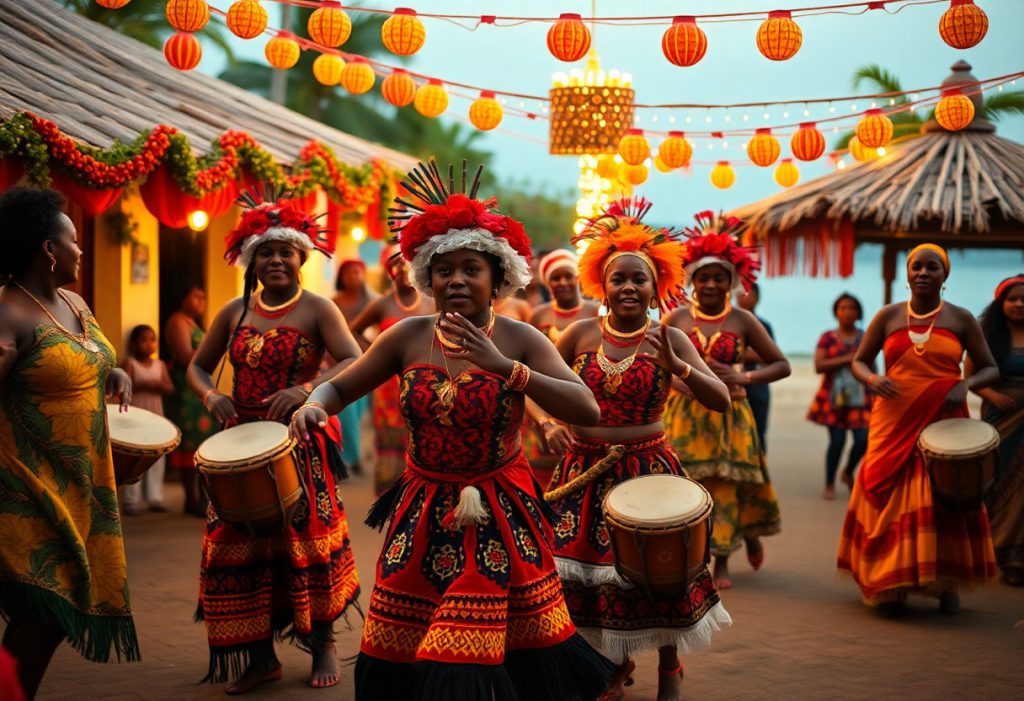
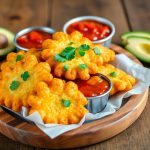




The Garifuna Wanaragua dance indeed offers a fascinating lens into the rich tapestry of Christmas traditions, particularly those that emerge from diverse cultural contexts. As you’ve pointed out, this practice is not just a form of entertainment; it is deeply interwoven with themes of resilience and cultural pride. The blending of music, dance, and social commentary speaks volumes about how traditions can serve as a powerful form of storytelling, preserving history while also addressing contemporary issues faced by the Garifuna community.
Your reflection on the Garifuna Wanaragua dance really resonates with me, especially how it encapsulates resilience and cultural pride. It’s interesting how these expressions of tradition can evolve while still holding onto their core messages about identity and community.
The Garifuna Wanaragua dance is such a fascinating tradition! I love how it’s not just about the performance but also a way for the Garifuna people to express their history and identity. It makes me reflect on how many Christmas traditions around the world, like the Wanaragua, serve as a means of cultural storytelling.